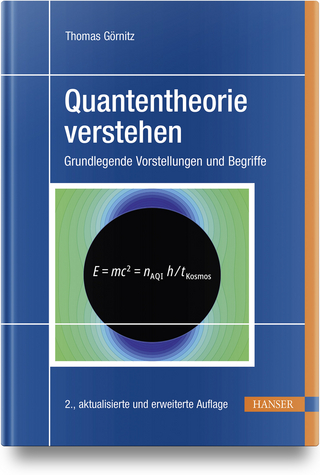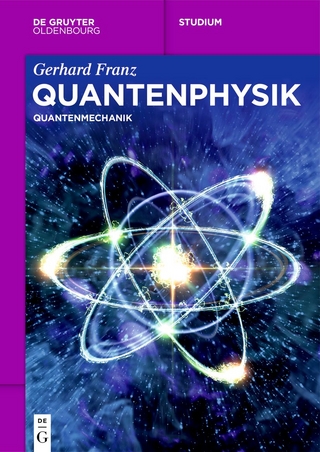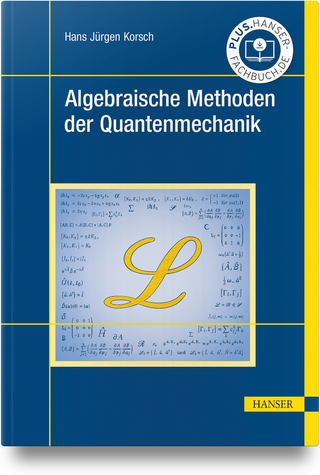
Quantum Triangulations
Springer International Publishing (Verlag)
978-3-319-67936-5 (ISBN)
This book discusses key conceptual aspects and explores the connection between triangulated manifolds and quantum physics, using a set of case studies ranging from moduli space theory to quantum computing to provide an accessible introduction to this topic.
Research on polyhedral manifolds often reveals unexpected connections between very distinct aspects of mathematics and physics. In particular, triangulated manifolds play an important role in settings such as Riemann moduli space theory, strings and quantum gravity, topological quantum field theory, condensed matter physics, critical phenomena and complex systems. Not only do they provide a natural discrete analogue to the smooth manifolds on which physical theories are typically formulated, but their appearance is also often a consequence of an underlying structure that naturally calls into play non-trivial aspects of representation theory, complex analysis and topology in a way that makes the basic geometric structures ofthe physical interactions involved clear.
This second edition further emphasizes the essential role that triangulations play in modern mathematical physics, with a new and highly detailed chapter on the geometry of the dilatonic non-linear sigma model and its subtle and many-faceted connection with Ricci flow theory. This connection is treated in depth, pinpointing both the mathematical and physical aspects of the perturbative embedding of the Ricci flow in the renormalization group flow of non-linear sigma models. The geometry of the dilaton field is discussed from a novel standpoint by using polyhedral manifolds and Riemannian metric measure spaces, emphasizing their role in connecting non-linear sigma models' effective action to Perelman's energy-functional. No other published account of this matter is so detailed and informative.
This new edition also features an expanded appendix on Riemannian geometry, and a rich set of new illustrations to help the reader grasp the more difficult points of the theory. The book offers a valuable guide for all mathematicians and theoretical physicists working in the field of quantum geometry and its applications.Mauro Carfora, 19 received his Laurea in Physics from the University of Rome La Sapienza in 1977, and his PhD from University of Texas at Dallas in 1981. He has held positions at several Italian Universities and is a full professor of Mathematical Physics at the University of Pavia since 2001. Also, he has held visiting positions in universities and research institutions abroad, among which the University of California at Berkeley and Santa Barbara, USA, and the Nils Bohr Institute, Copenhagen, Denmark. His research interests include Geometrical Analysis, and Combinatorial methods in theoretical and mathematical Physics. Applications in quantum gravity and moduli space theory. Ricci flow on Riemannian manifolds. Applications of geometric flows to theoretical and mathematical Phyics. Renormalization group flow and geometrical flows. Relativistic cosmology. Annalisa Marzuoli received her Laurea in Physics in 1979. She held a research fellowship of the National Research Council in Mathematical Physics from 1979-1984. Then she was a researcher in Theoretical Physics, until she became an associate professor in 2000, all at the University of Pavia. Her current fields of research include geometric and algebraic aspects of condensed matter systems (graphene and topological insulators) and of Topological Quantum Field Theories, with applications to quantum computing. Quantum integrable systems, their semiclassical analysis and relations with the Askey-Wilson scheme of hypergeometric orthogonal polynomials, with applications to atomic and molecular physics and to discretized gravity models. Improvement of interconnected algebraic, geometric and combinatorial methods to model many-body (quantum and lattice) systems.
Preface.- Acknowledgements.- Triangulated Surfaces and Polyhedral Structures.- Singular Euclidean Structures and Riemann Surfaces.- Polyhedral Surfaces and the Weil-Petersson Form.- The Quantum Geometry of Polyhedral Surfaces: Non-Linear s Model and Ricci Flow.- The Quantum Geometry of Polyhedral Surfaces: Variations on Strings and All That.- State Sum Models and Observables.- State Sum Models and Observables.- Combinatorial Framework for Topological Quantum Computing.- Appendix A: Riemannian Geometry.- Appendix B: A Capsule of Moduli Space Theory.- Appendix C: Spectral Theory on Polyhedral Surfaces.- Index.
| Erscheinungsdatum | 29.11.2017 |
|---|---|
| Reihe/Serie | Lecture Notes in Physics |
| Zusatzinfo | XX, 392 p. 113 illus., 92 illus. in color. |
| Verlagsort | Cham |
| Sprache | englisch |
| Maße | 155 x 235 mm |
| Gewicht | 696 g |
| Themenwelt | Naturwissenschaften ► Physik / Astronomie ► Quantenphysik |
| Naturwissenschaften ► Physik / Astronomie ► Theoretische Physik | |
| Schlagworte | analytic geometry • Analytic topology • Classical and Quantum Gravitation, Relativity Theo • dynamical triangulations • Geometry of polyhedral manifolds • Gravity • Higher dimensional manifolds • Manifolds and Cell Complexes (incl. Diff.Topology) • Mathematical Applications in the Physical Sciences • Mathematical methods for quantum computing • Mathematical Modelling • Mathematical Physics • moduli space • Numerical and Computational Physics, Simulation • Physics • Physics and Astronomy • Polyhedral surfaces and complex geometry • Quantum gravity and non-critical string theory • Quantum Liouville Theory • Quantum Physics • Quantum physics (quantum mechanics & quantum field • Quantum physics (quantum mechanics & quantum field • Relativity physics • topological quantum field theory • Weil-Petersson • Weil–Petersson • Wess-Zumino-Witten theory • Wess–Zumino–Witten theory |
| ISBN-10 | 3-319-67936-8 / 3319679368 |
| ISBN-13 | 978-3-319-67936-5 / 9783319679365 |
| Zustand | Neuware |
| Haben Sie eine Frage zum Produkt? |
aus dem Bereich


